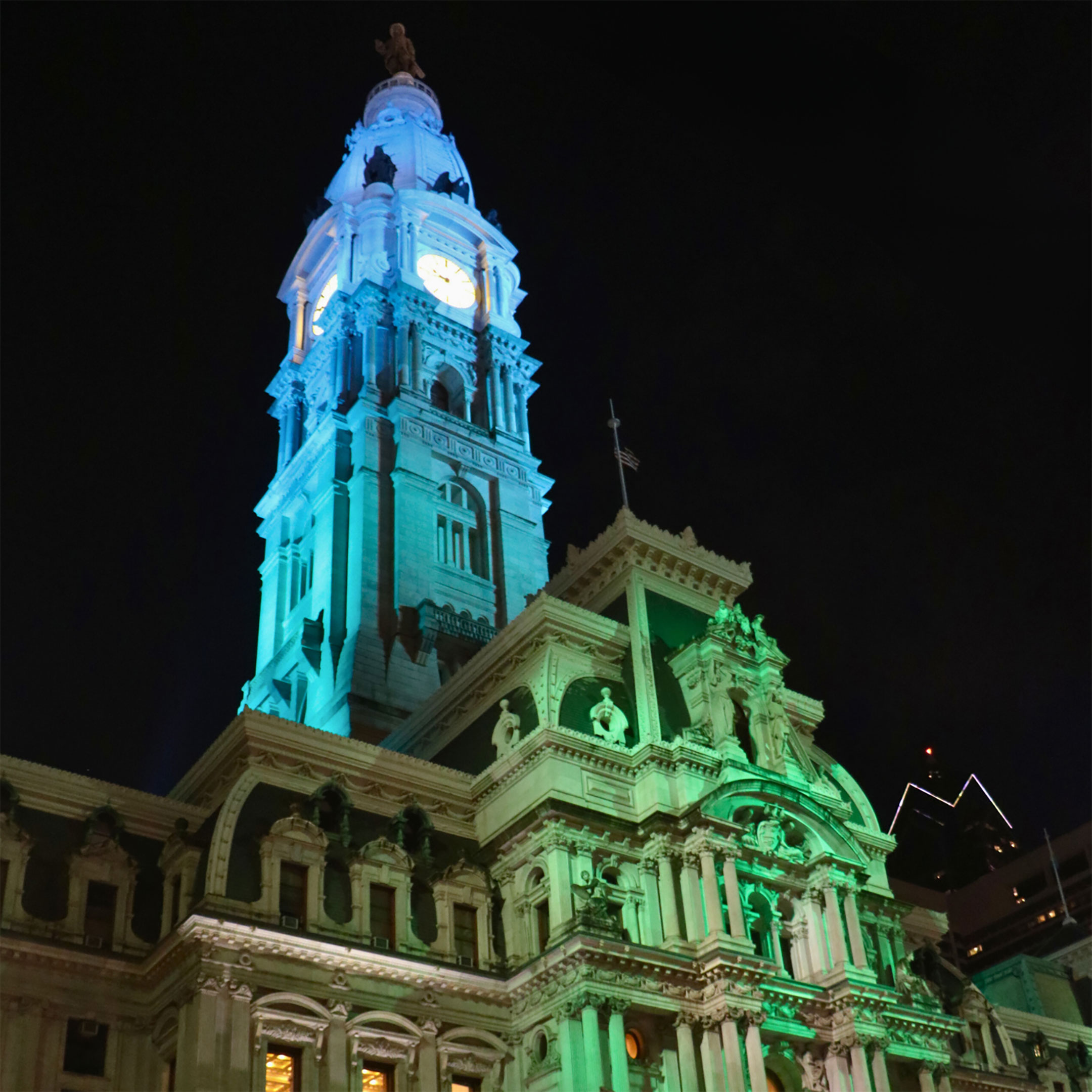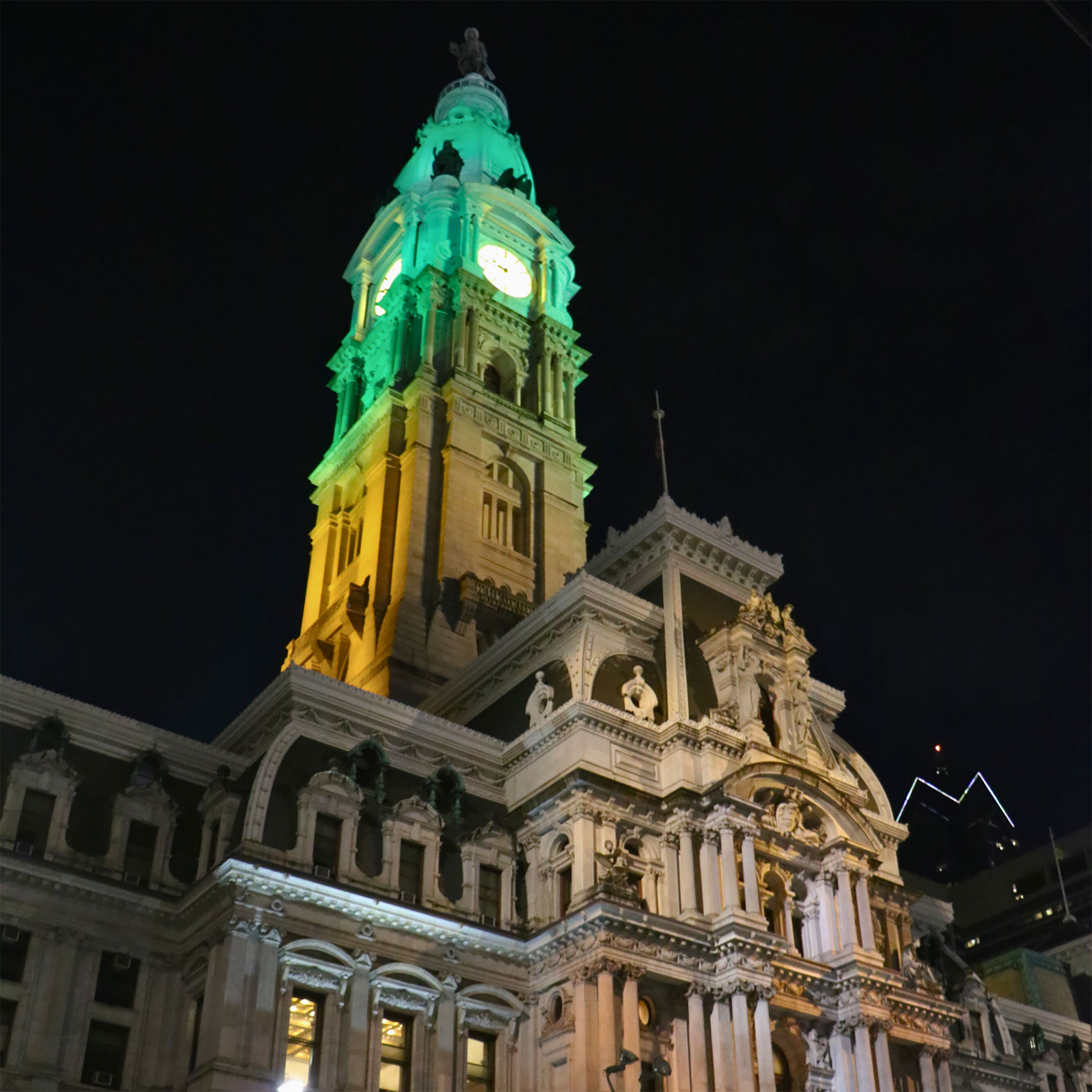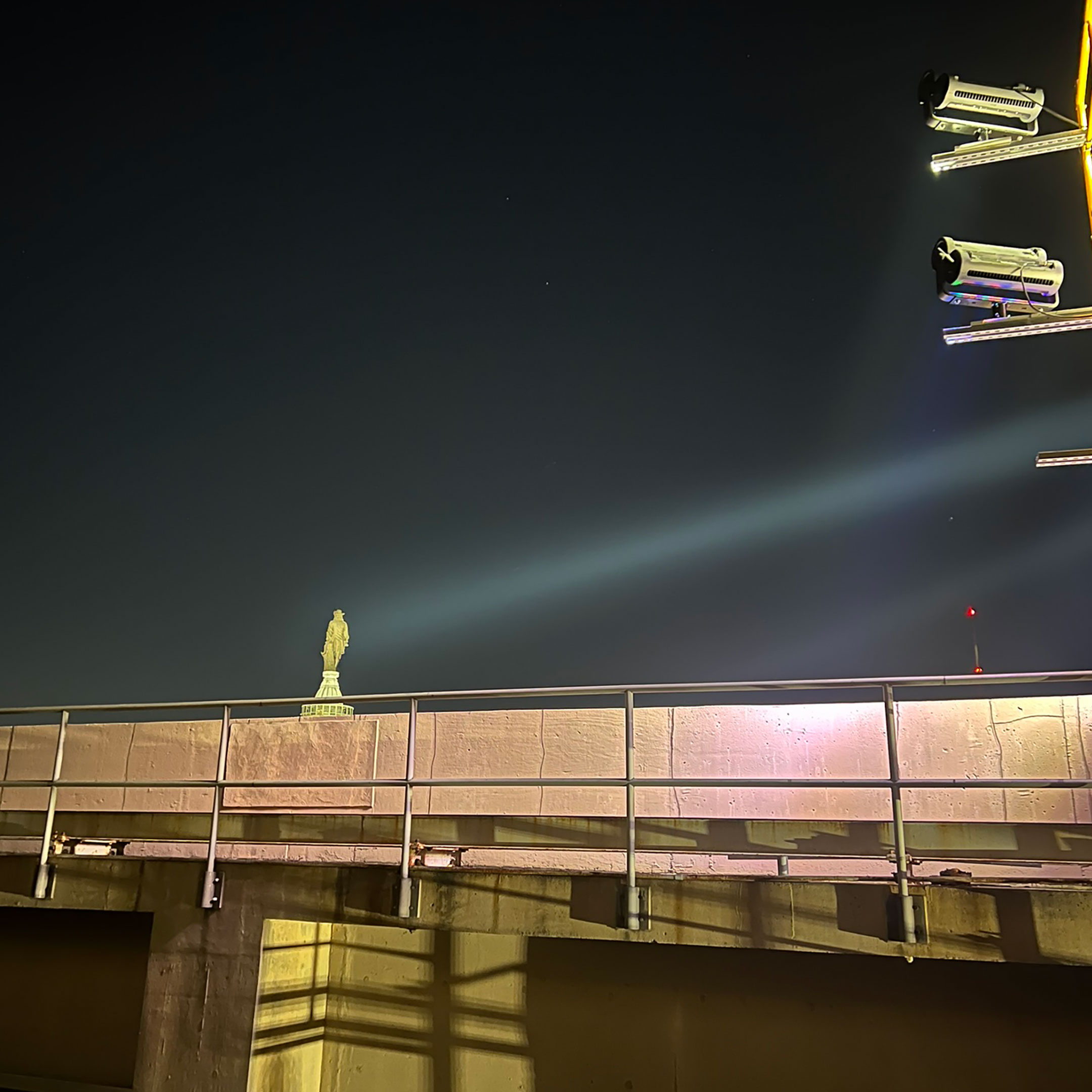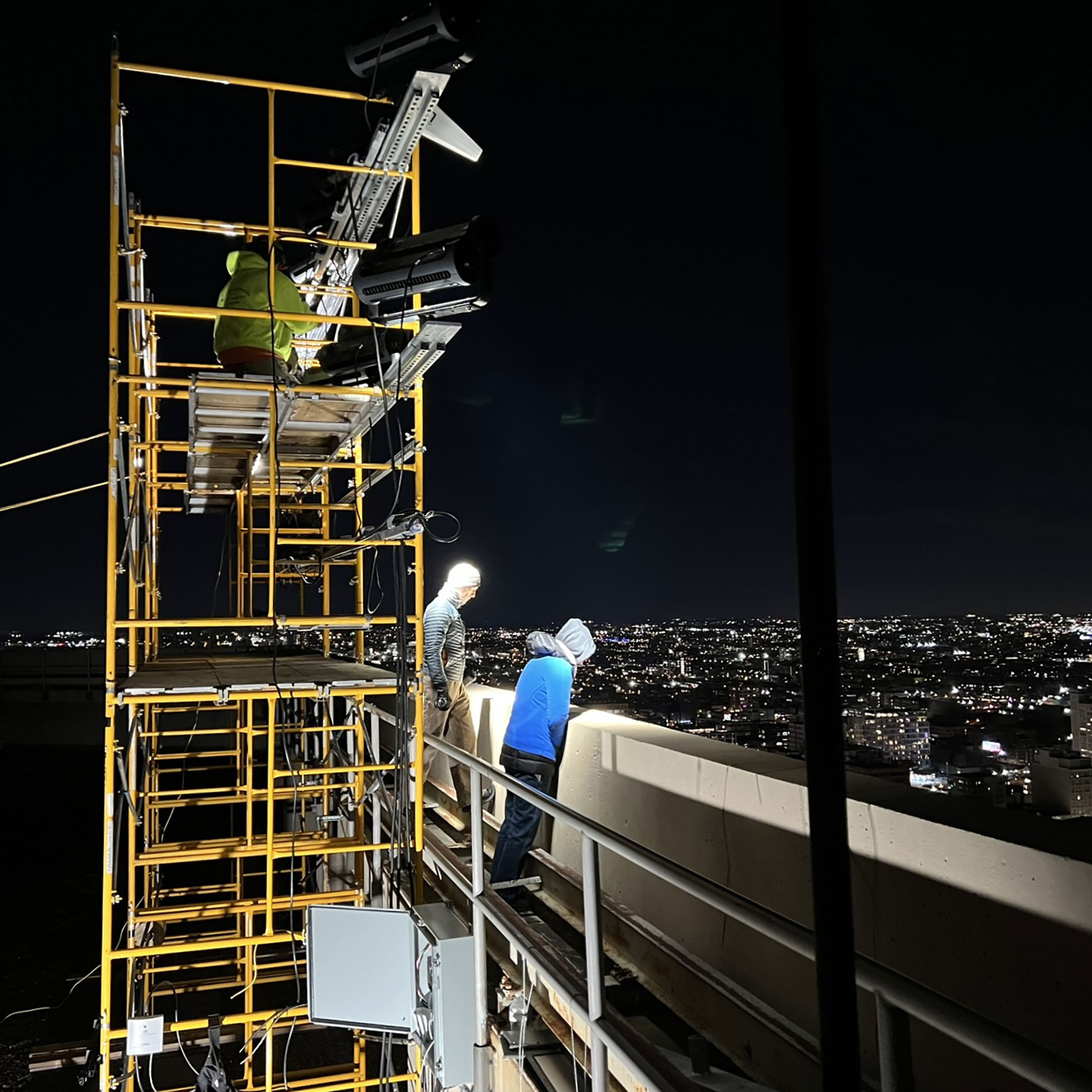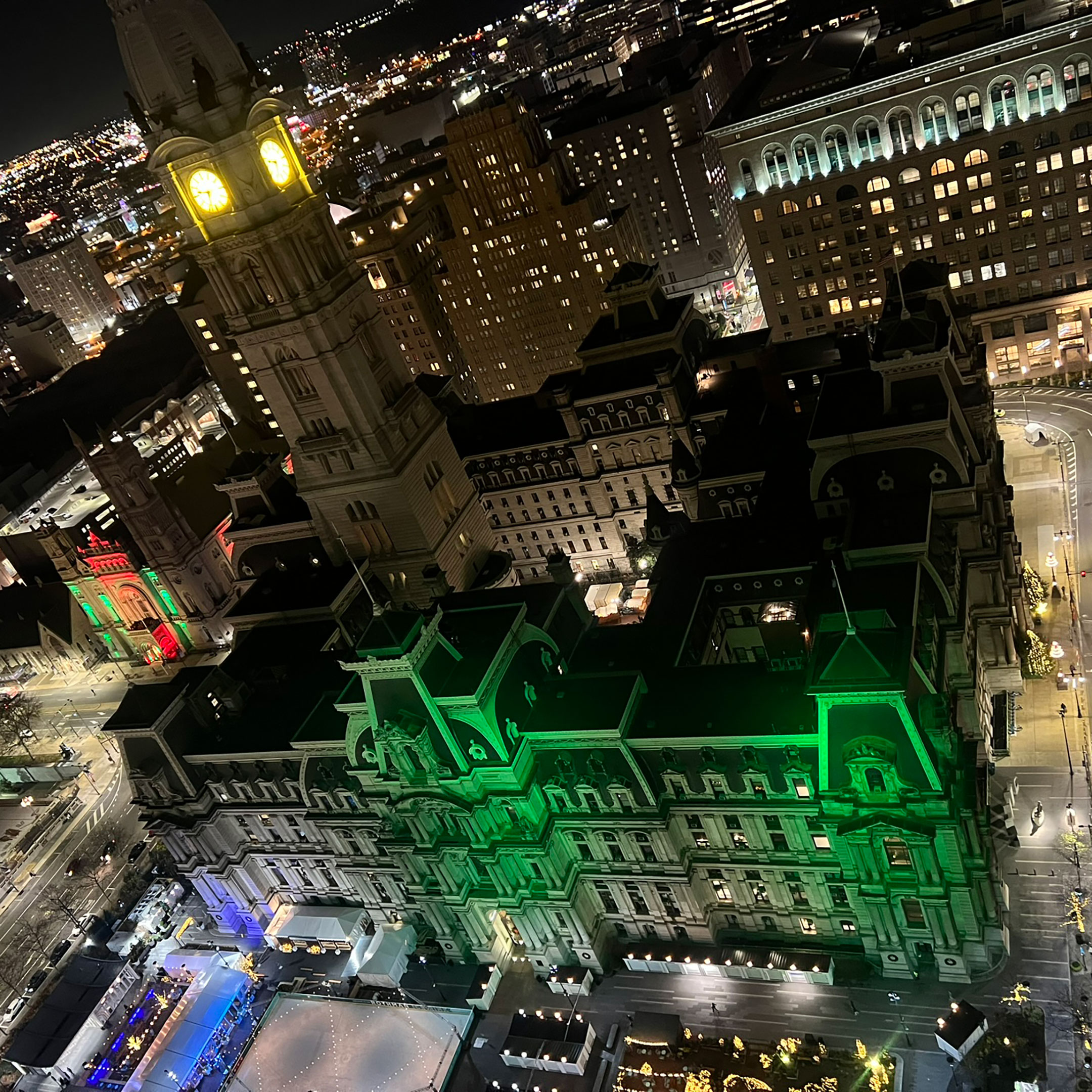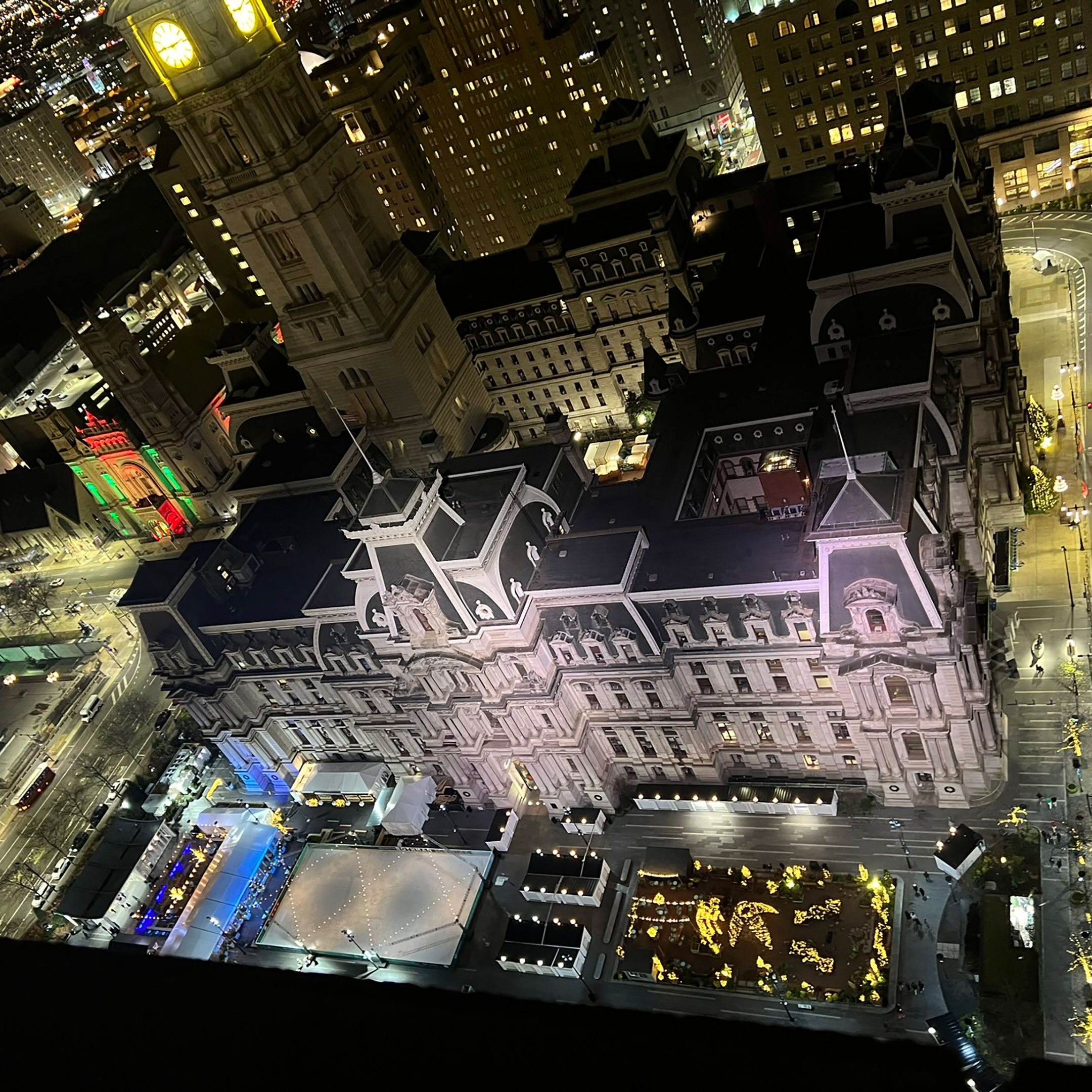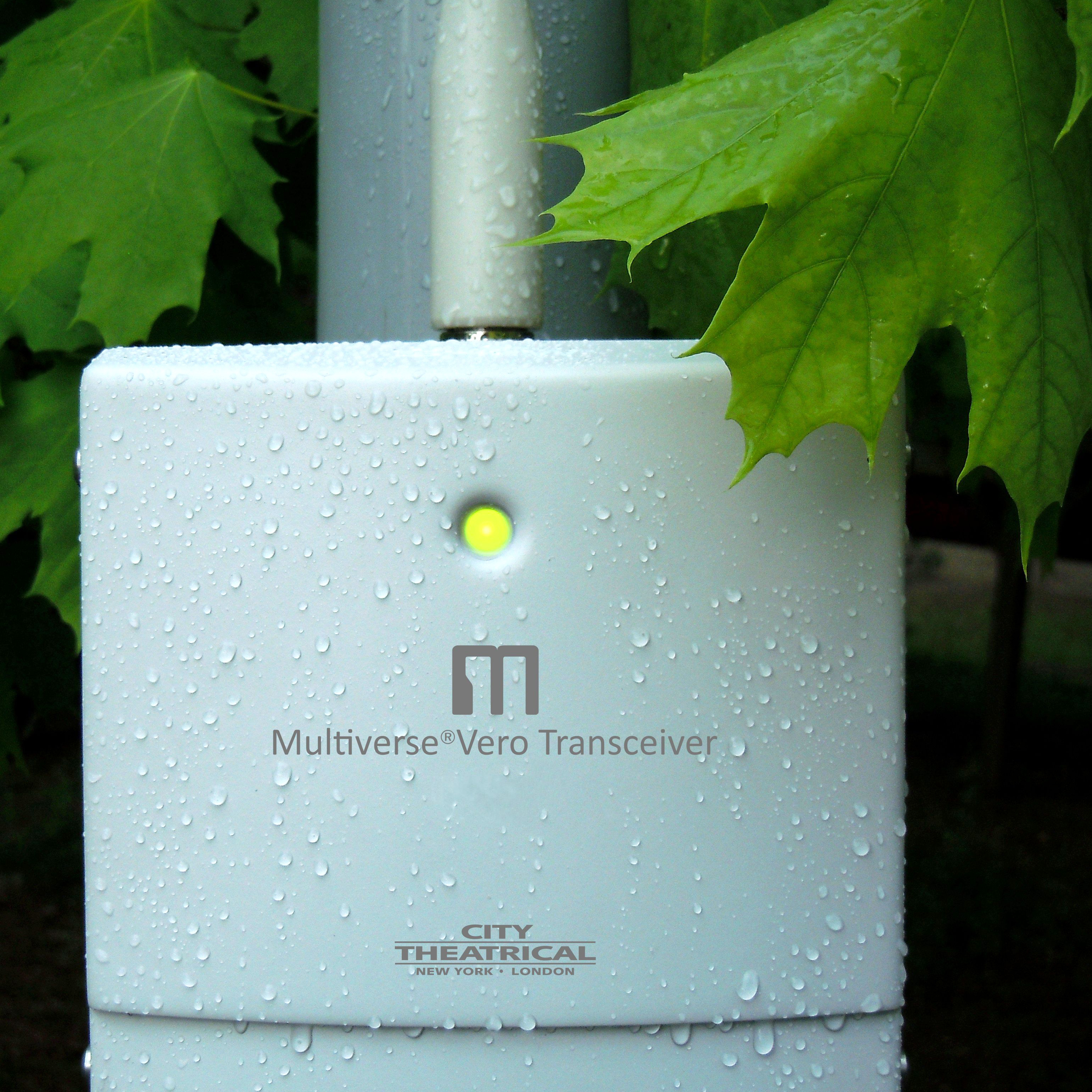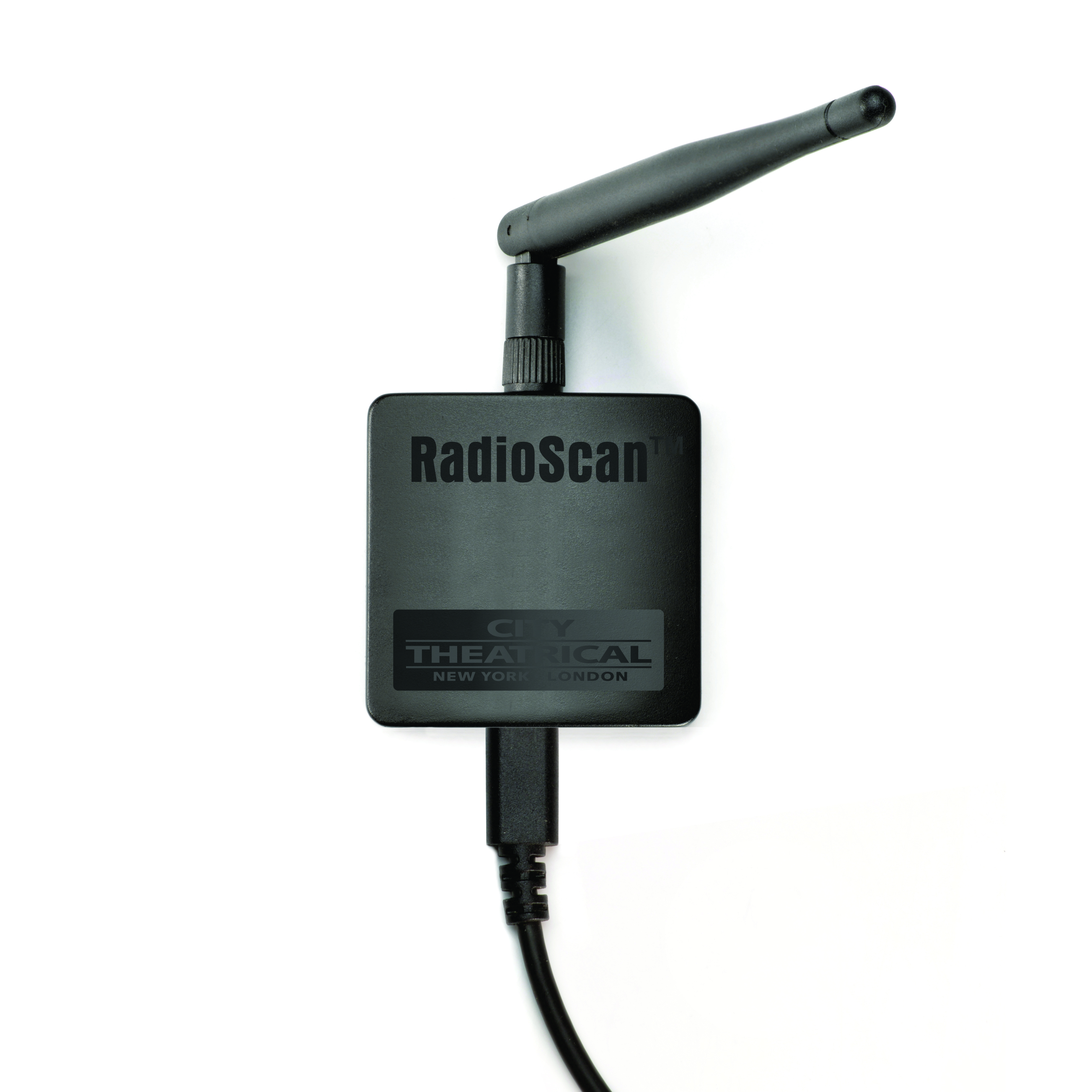Philadelphia City Hall
Learn how Multiverse Vero outdoor-rated wireless DMX/RDM was used by the Starlite team to help illuminate the Philadelphia City Hall facade in the City Center District of Philadelphia, Pennsylvania, USA in this City Theatrical case study.
City Theatrical's Multiverse Vero Outdoor Wireless DMX/RDM for Philadelphia City Hall, Philadelphia, Pennsylvania, USA
Starlite's Senior Project Manager Andrew Thompson and his team were looking to illuminate the Philadelphia City Hall facade with a mix of color-changing and carefully selected white light LED fixtures. They required a robust wireless DMX/RDM solution with a reliable data transmission strategy.
Discover more about their experience with the Multiverse® Vero Transceiver for outdoor-grade wireless DMX/RDM, RadioScan® Spectrum Analyzer for broadcast planning, and Yagi Long Range Antennas to direct the signal, in this City Theatrical wireless DMX case study Q&A with Andrew Thompson.
CASE STUDY:
Multiverse Vero Transceiver Outdoor Wireless DMX/RDM for Philadelphia City Hall, Philadelphia, Pennsylvania, USA
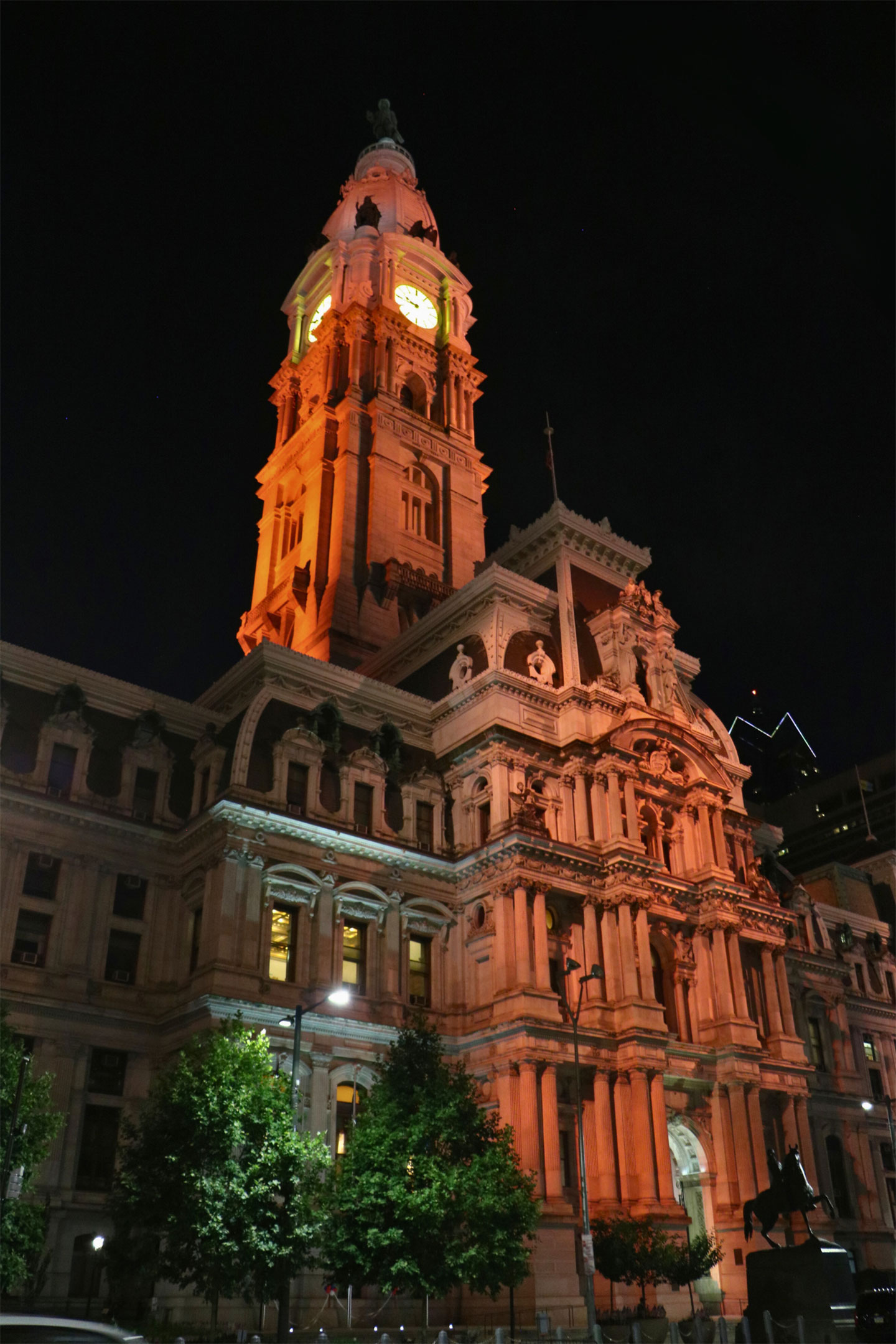
Philadelphia City Hall with Multiverse Vero wireless DMX/RDM system. Photos Courtesy of Starlite.
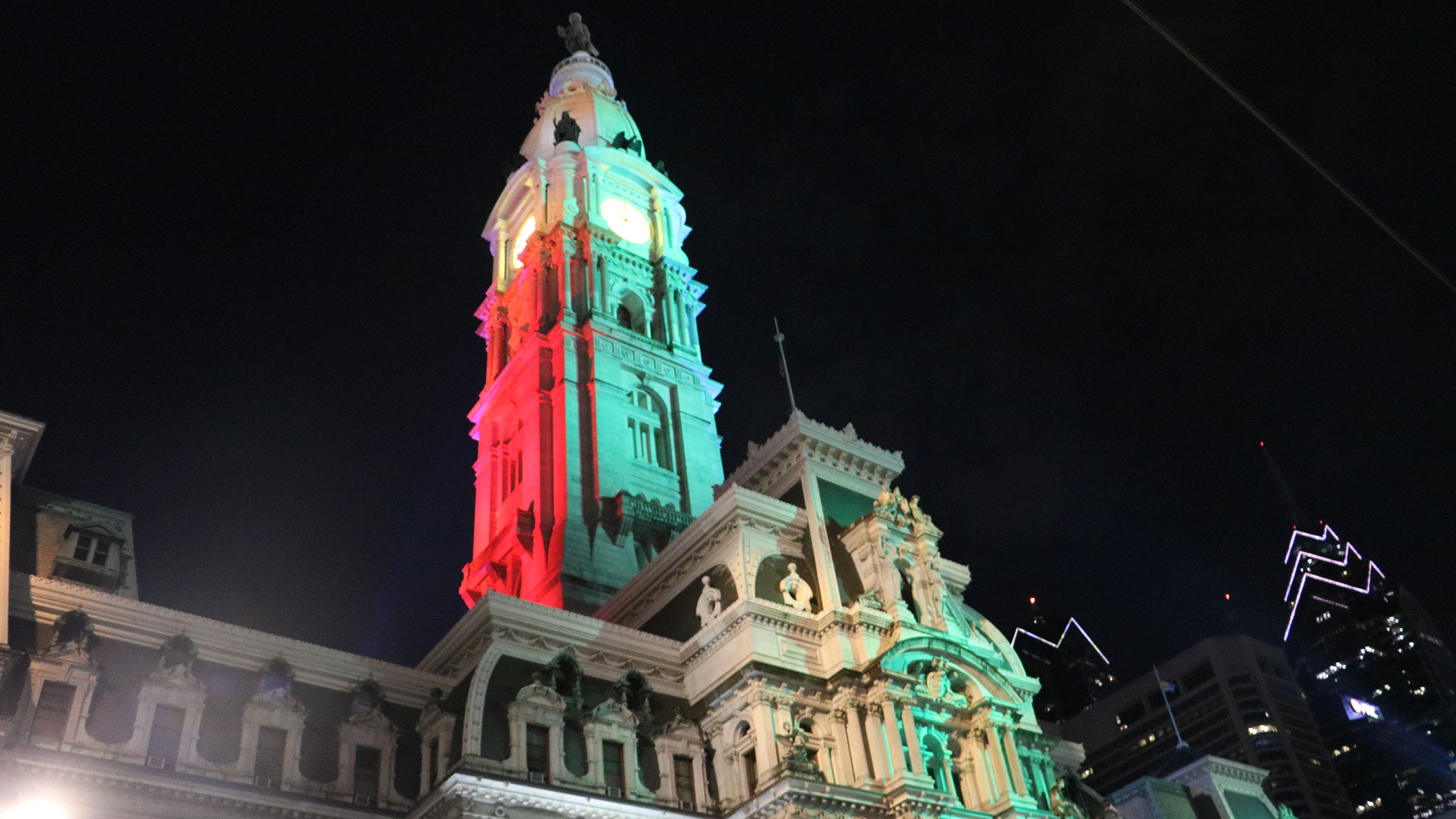
Philadelphia City Hall with Multiverse Vero wireless DMX/RDM for Outdoor RGBW LED Lighting Facade Upgrades. Photos Courtesy of Starlite.
Philadelphia City Hall is the largest municipal building in the United States, containing over 14.5 acres of floor space. It is an architectural treasure inside and out.
In his original 1682 design for the city, William Penn planned five public squares, setting aside the Center Square for public buildings. It took 200 years before the square was used for that purpose.
The building’s exterior is covered with intricate sculptures representing the seasons and continents, as well as allegorical figures, animals and masks.
All of the sculptures were designed by Alexander Milne Calder, including the 27-ton statue of William Penn atop the tower.
Since 1983, Starlite has had a growing inventory of commercial technology equipment as well as a diverse team of professionals who are enthusiastic and devoted to the advancement of art. Their 53,000 square foot corporate headquarters is located in Moorestown, New Jersey, and is home to a dedicated staff of account executives, creative designers, technical engineers, service technicians, fabricators, and other specialists.
Starlite website
INTRODUCTION
In order to incorporate Multiverse wireless DMX/RDM into the ETC Mosiac show control system that operates the new RGBW LED light fixtures at Philadelphia City Hall, Starlite's Senior Project Manager Andrew Thompson used 20 Multiverse Vero Transceivers and long range Yagi Antennas to broadcast wireless DMX/RDM in this outdoor setting. They also used a RadioScan Spectrum Analyzer to ensure their signal would broadcast over a less crowded area of the RF spectrum.

CASE STUDY Q&A WITH ANDREW THOMPSON OF STARLITE:
City Theatrical (CT): Hi Adrew! Can you tell us more about implementing wireless DMX for the recent lighting of Philadelphia City Hall?
Andrew Thompson (AT): Philadelphia City Hall was previously lit by conventional flood lights located on ten adjacent buildings in the heart of Center City Philadelphia. Replacing these with a mix of color-changing and carefully selected white light LED fixtures required a robust and reliable data transmission strategy. Other projects elsewhere in the city that utilize City Theatrical wireless DMX systems have been operating perfectly with minimal maintenance for many years, so the project team knew to expect the same from City Theatrical’s Multiverse wireless DMX on this project.
The project team designed a data distribution topology for the roof of City Hall to distribute DMX to ten Multiverse Vero Transceiver units with directional Yagi antennas so that each remote building would have a dedicated antenna sending it the appropriate DMX signals.
CT: Why was/is Multiverse wireless DMX the right solution for this outdoor architectural lighting installation?
AT: The project is in a busy and crowded area of the city, in terms of people and buildings, as well as RF spectrum usage. Multiverse’s interference rejection and avoidance mechanisms were critical to flicker-free DMX transmission.
Click to enlarge an image below:
CT: Can you walk us through some of the steps in this wireless DMX installation?
AT: The project started by establishing the network of transmitters on the roof of City Hall. Devices and antennas were installed and terminated, and the antennas rough-aimed at the remote buildings.
After the new steel structures were erected on the remote buildings and fixtures installed, the receiving Multiverse Vero Transceiver units were installed and the connections ironed out. Due to the distances involved, Starlite acquired and utilized special equipment to align antennas within the narrow cone of directed RF energy from transmitter to receiver.
During overnight focus sessions, technicians utilized the wireless DMX connections to turn individual fixtures on and off on demand to support the precise aiming of each fixture. This precise aiming later allowed animated lighting shows to scroll across and around the façade of City Hall.
Click to enlarge a progress photo below:
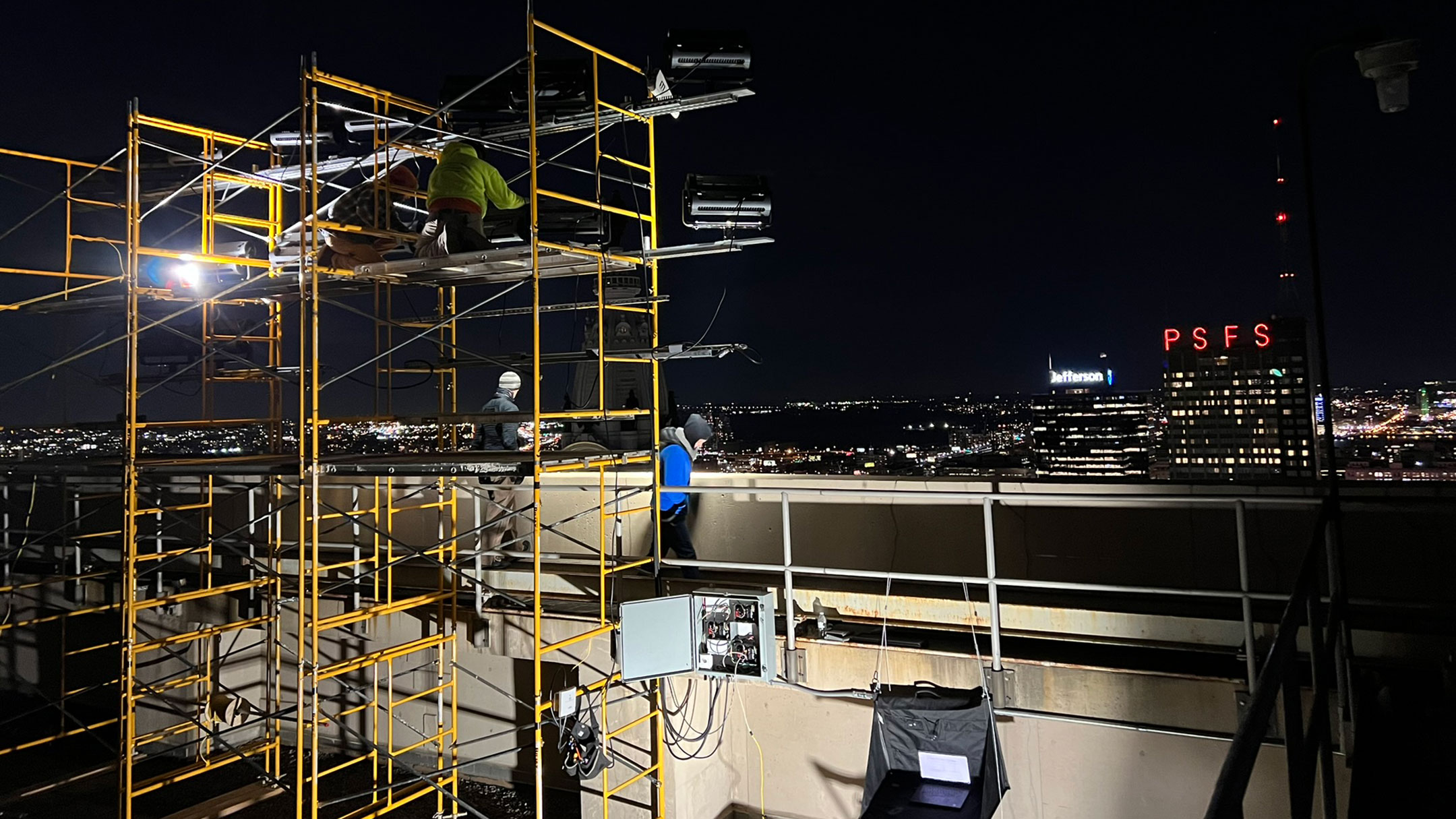
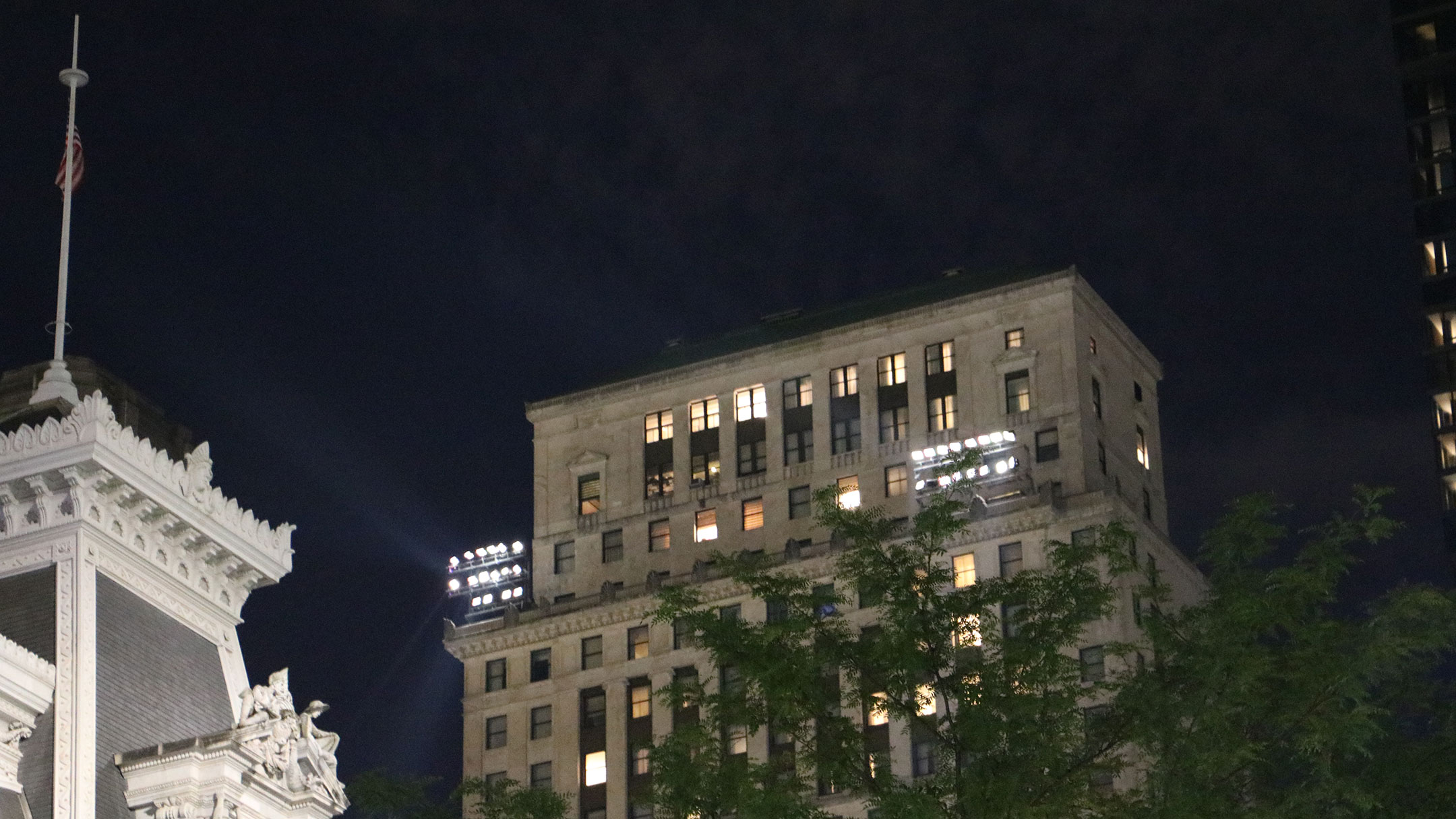

Lucas Nguyen, Andrew Thompson, and Ben Tilley of Starlite.
"The Multiverse Vero Transceiver’s ability to be configured to
respond to RDM without passing it along to the fixtures allows
our technicians to check if a connection is healthy between
the central controller and remote building without physically
accessing the remote receivers. Limiting the need for physical
access to the equipment was key to managing the project
timeline.”
- Andrew Thompson, Senior Project Manager, Starlite
CT: How were the ETC control system and Multiverse systems integrated?
AT: During the installation, we found that RDM messages to the fixtures had a tendency to cause intermittent unexpected behavior. The Multiverse Vero Transceiver’s ability to be configured to respond to RDM without passing it along to the fixtures allows our technicians to check if a connection is healthy between the central controller and remote building without physically accessing the remote receivers.
Since the ten buildings that the lighting fixtures are mounted to are owned and operated by a variety of different parties, limiting the need for physical access to the equipment was key to managing the project timeline,
Click to enlarge an image below:
CT: Was any testing involved when selecting Multiverse Vero?
AT: In concert with the project designers, Starlite did multiple tests between buildings to verify that Multiverse data transmissions could be received in the installation environment. Additionally, the RadioScan Spectrum Analyzer was used constantly throughout the installation to select SHoW IDs and frequency ranges with the least interference and to troubleshoot antenna aiming issues.
CT: Have you had any outdoor- or city bandwidth-related issues? How is it working today?
AT: During the installation, we found some planned locations for receiving antennas were located in the path of cellular antenna arrays which, despite operating in totally different frequency ranges, were generating enough RF energy that a signal lock could not be established between the Multiverse transmitter and receiver.
In these cases, we were able to relocate the transmitter from the roof of City Hall to an adjacent remote building with a secure connection and daisy-chain the signal from remote building to remote building, maintaining the link without interference from the cellular arrays.
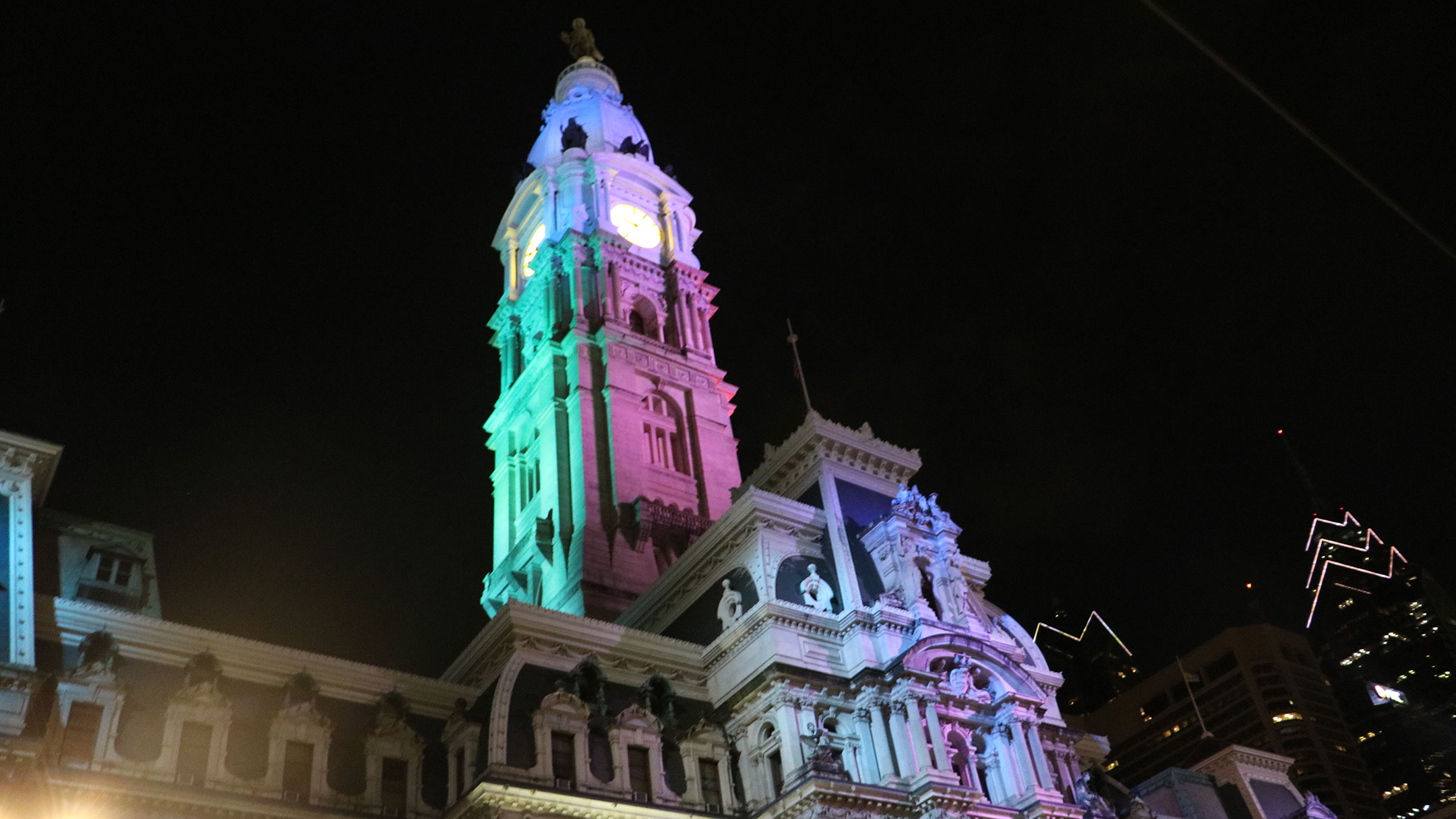
Philadelphia City Hall with Multiverse Vero wireless DMX/RDM for Outdoor RGBW LED Lighting Facade Upgrades. Photos Courtesy of Starlite.
CT: Are there any learnings or unique aspects of the project that you would like to point out?
AT: Philadelphia City Hall is uniquely situated in the center of the city, which is why the district is known as Center City and infrequently referred to as 'downtown'. The main subway transit lines intersect directly below City Hall and major hubs for light rail and bus services are located within blocks. Along with the geography of the city’s major East/West and North/South corridors intersecting at City Hall, it is utilized by residents and visitors alike as a wayfinding beacon to help navigate the city. Thousands of residents and visitors pass by City Hall at all times of day and night, so showing off the stunning architecture of the world’s largest free-standing masonry building in the best light has been a privilege and we are very proud of what we and our project partners have achieved.
To learn more about Starlite, visit: https://starlite.com
CITY THEATRICAL PRODUCTS USED
